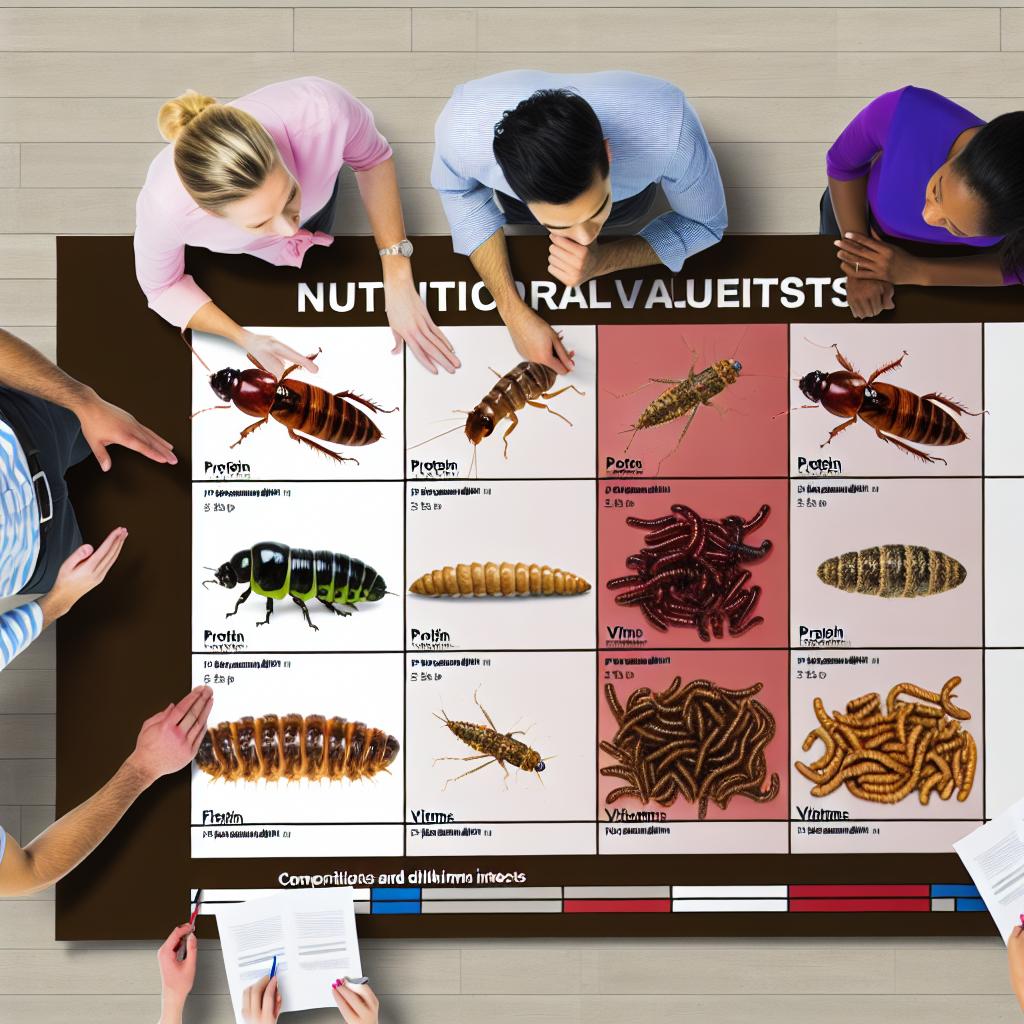The Nutritional Composition of Edible Insects
In recent years, the interest in edible insects has surged due to their potential as a sustainable and nutritious food source. Edible insects are recognized for their protein, vitamins, and essential minerals, offering a compelling alternative or supplement to traditional livestock-based protein sources.
Protein Content
Edible insects are renowned for their high protein content. On average, they contain about 35-60% protein by dry weight, comparable to conventional meat sources like beef and chicken. This protein is considered high quality, containing essential amino acids necessary for human nutrition.
Understanding Protein Quality
Protein quality in edible insects is determined by the presence of all essential amino acids. These amino acids are crucial for various bodily functions, including muscle growth, immune function, and enzyme production. What’s notable is that the protein from insects is often more digestible than plant-based proteins, making it an excellent option for individuals with specific dietary requirements or those seeking varied protein sources. Scientists and nutrition experts have been examining the potential of insects to supplement global protein demands, particularly in regions where protein malnutrition is predominant.
Fatty Acids and Lipids
Apart from protein, edible insects contain a rich concentration of healthy fats, which includes omega-3 and omega-6 fatty acids. These are essential fats that the body cannot synthesize, thus needing to be acquired through diet. Omega-3 and omega-6 fatty acids contribute significantly to cardiovascular health by managing cholesterol levels and reducing inflammation.
Diversity in Lipid Profiles
The diversity in the lipid content of edible insects is influenced by the species and their diet. For instance, insects like mealworms are known for their relatively high fat content compared to others. Such diversity allows consumers to select insect types that best suit their health needs. Those looking for higher omega-3 proportions might opt for one species over another, emphasizing the personalized nutrition approach edible insects can offer.
Micronutrients
Edible insects are abundant in micronutrients. They boast a significant amount of vitamins and minerals that are often lacking in standard diets. Among the most noteworthy are their high levels of iron, zinc, magnesium, and vitamin B12.
Iron and Other Crucial Minerals
For populations dealing with iron-deficiency anemia, insects can provide a vital dietary source of iron. For example, an analysis of crickets has shown that they can contain twice the iron found in equivalent servings of spinach. Zinc and magnesium, which are essential for immune function and bone health, respectively, are also present in considerable amounts. The vitamin B12 content, often absent in plant-based diets, provides an additional reason for considering insects as a dietary supplement.
Digestibility and Bioavailability
The digestibility of protein from insect sources is generally high, meaning the human body can efficiently break down and utilize the nutrients they contain. In addition, the bioavailability of the vitamins and minerals in insects is remarkable. Bioavailability refers to the extent and rate at which the active ingredients or nutrients are absorbed and become available at the intended site of action within the body. Various factors, including the species of the insect and the preparation method, influence nutrient absorption.
Factors Influencing Nutrient Absorption
Methods ranging from simple roasting to complex culinary techniques can affect the digestibility and bioavailability of nutrients in insects. Heat, for example, can sometimes enhance the bioavailability of certain minerals while potentially reducing the potency of sensitive vitamins. Understanding these dynamics can assist in optimizing dietary practices involving insects.
Environmental and Health Considerations
Beyond their nutritional benefits, edible insects represent an environmentally sustainable food choice. Traditional livestock farming is resource-intensive, requiring a significant amount of land, water, and feed. In comparison, insect farming demands notably fewer resources, contributing to less environmental degradation.
Reduced Environmental Impact
By choosing edible insects, consumers can significantly decrease their ecological footprint. Insect farming produces substantially lower greenhouse gas emissions compared to cattle, poultry, or pig farming. Additionally, insects can be raised on organic side streams, such as food waste, enhancing their sustainability credentials.
Minimized Health Risks
Unlike traditional livestock, insects are less likely to carry zoonotic diseases, which are infectious diseases that jump from animals to humans. This attribute makes them a safer option concerning disease transmission concerns. Moreover, insects have been part of many cultures’ diets for centuries, with historical evidence suggesting their nutritional and health benefits.
In conclusion, integrating edible insects into our diet offers a promising and sustainable avenue for meeting the growing global demand for nutritious food. These creatures provide essential nutrients efficiently while minimizing environmental and health risks. As the global population increases and places more pressure on food resources, reimagining insects as a staple in our diet presents a valuable solution to address these challenges. Insects not only provide essential nutrition but also represent a step towards more sustainable and eco-friendly eating practices.

